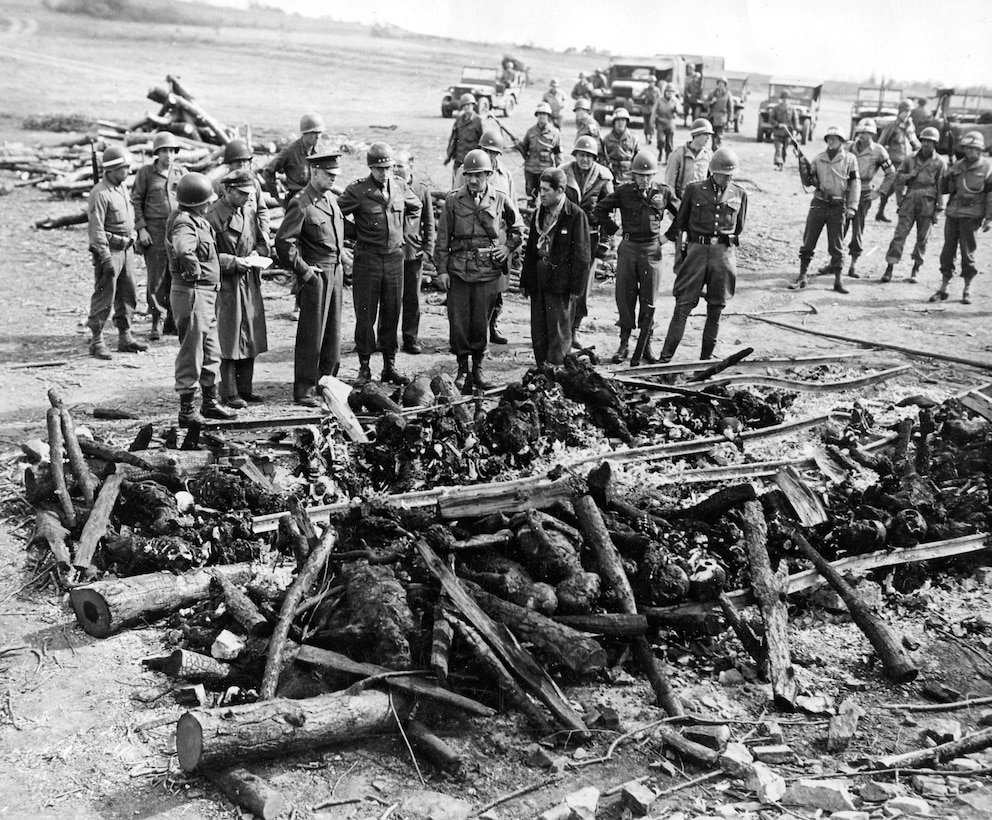Very interesting. Given how clear the area is at this time, I am inclined to think the piles we see adjacent to the pyre are indeed ash/materials (overwhelmingly wood) from the cremation process. What we do not see there is charred human remains, and these piles represent a very small amount of ash relative to the amount of wood that would be needed to fully reduce corpses down to anywhere near the level of bone fragments. From Mattogno's work, we find that one ton (1,000kg) of wood reduces to about 0.34m³ of ash. The three piles in this photo below seem to amount to around ~3m³, allowing up to ~9,000kg of wood having been used in the process by the time of this photo (less than 0.5% of what would be needed to reduce the total number of ~6,800 corpses to coarse fragments).Wetzelrad wrote: ↑Tue Oct 21, 2025 8:25 pm EDIT: This photo is dated 02.13, twelve days before Hahn photographed the pyres. The most-photographed pyre would later be built roughly in the center of the photo. You can see how well the street was already cleared out by then.
I think this provides the best establishing shot of the area. You can also see wagons with boxes in them. Coffins, ash containers, or something else?
Of course, we can infer that there may have been multiple pick-ups to retrieve and dump the ash piles but what we see in the photo much more reflects very incomplete (sanitation-focused) cremation. Reducing corpses even to large bone fragments (as is done in Hindu pyres) would require 200+ times the amount of wood ash shown in these piles above, not to mention corpse remains/ash which itself adds volume.
Hence, the "miracle" of cremation at Dresden (and by extension, Reinhardt camps) remains bunk.
